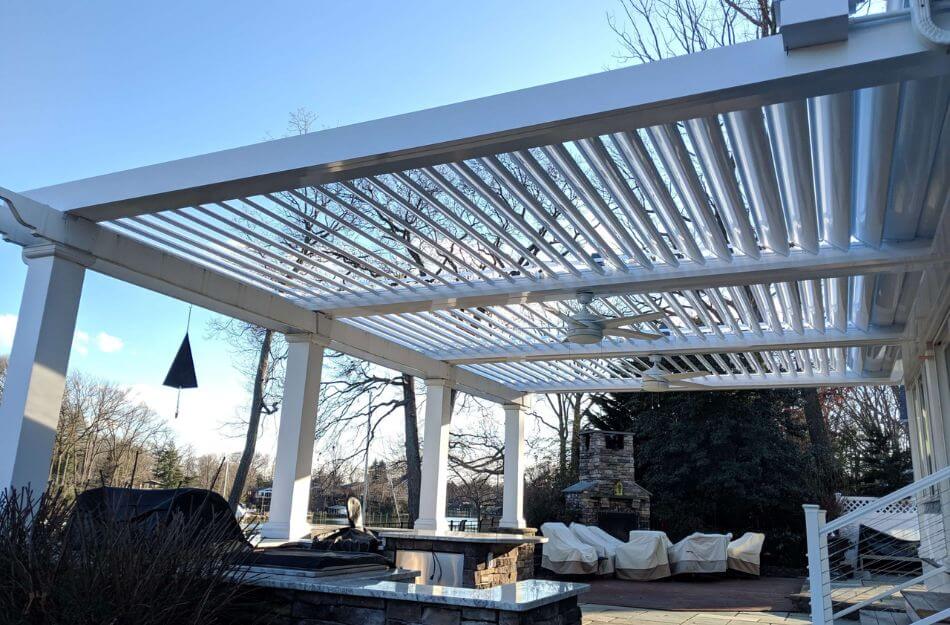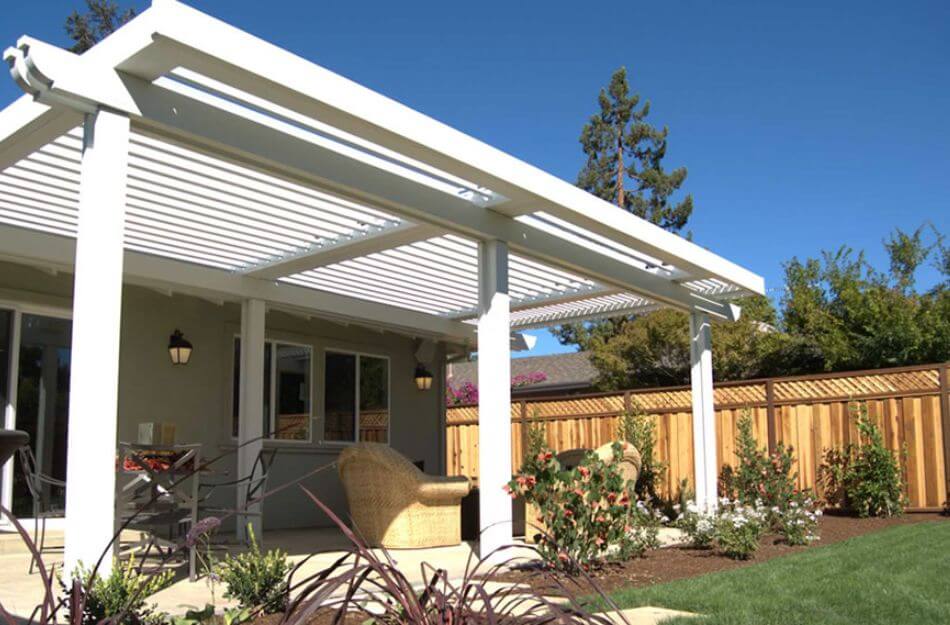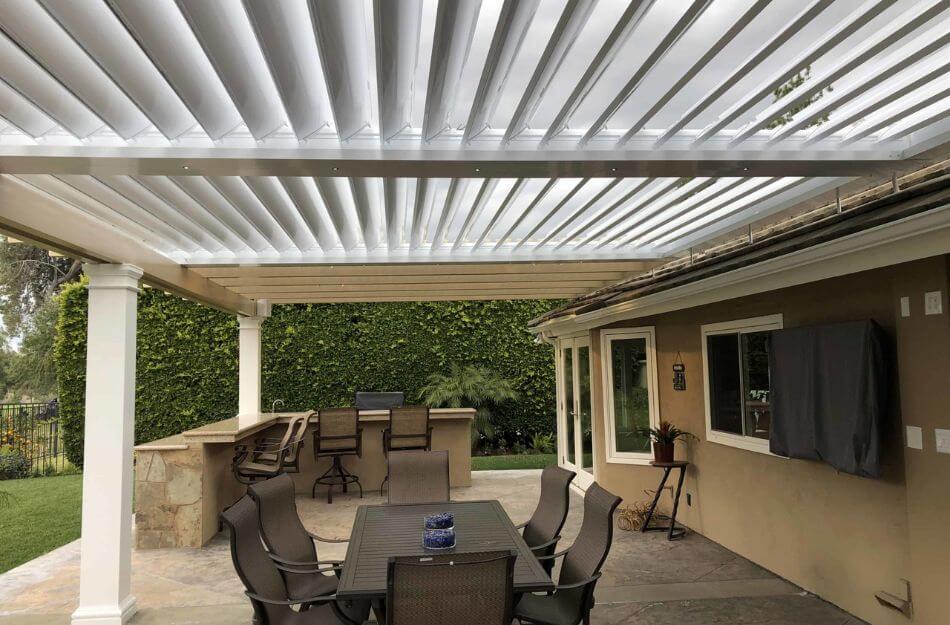Both porches and decks offer a place for people to appreciate the outdoors, increase the value of their property, and have flooring and railings at the very least.
Adding a deck or porch can take advantage of your home’s exterior area. Both connect to your house and go straight outside.
A deck is an outdoor open area typically built to the rear of a residence. In contrast, a porch is typically described as an enclosed additional area at the front of the residence.
Although there are some similarities, we will look at the differences in this guide to help you decide which to choose.

Table of Contents
Differences Between Deck and Porch
Although both are extremely useful and important, they have some differences which might turn out to be the deciding factors if you are looking forward to choosing one of these.
Have a look at the points below to better decide what suits you the most and serves your purpose the best.
Purpose and Location
Decks are outdoor enhancements to your living space, usually on the backside of homes.
Deck frequently comprises the outdoor living area in your yard, along with a backyard, pool, or external kitchen, and can be incorporated into the landscaping.
Decks can be utilized for outdoor leisure activities like barbecuing, tanning, entertaining, and unwinding. They could have features like hot tubs or fire pits and built-in furniture like benches or tables.
Porches are usually found as an extension to your entryway at the front of the house. They are typically accessible from the front stairs and enclosed by an extension or enlargement of your roof.
Some houses also have a sun porch or three-season veranda.
In addition to being protected by the roof overhead and usually screened in to allow access year-round, you could find this on the home’s exterior.
Porches can be used as a place to relax and observe street activity, a place to welcome guests, and in some instances, outdoor storage.
Maintenance
Especially wood decks, a deck requires more frequent upkeep than a porch. Power wash the decking and railings every few years or as required.

In addition, depending on the climate and how frequently the deck is used, timber decks must be stained or painted every 3-6 years. The porch can be cleaned, stained, or painted for less money if you do it yourself.
Balustrades and wood planks that have split or are warped occasionally need to be changed.
Laminate decks or other non-wood elements typically only require the occasional renewal of a broken plank or step and the occasional pressure washing as required.
When the decking medium is exposed to the elements, regular maintenance for a porch resembles that of a deck: cleaning the deck and applying stain as necessary.
The most expensive maintenance task is changing the roofing material, which can cost anywhere from 15 to 40 years, based on your choice. Porch shields also need to be patched and replaced.
Installation
Decks and porches built very similarly. The main difference between a porch and a deck is that a porch has a roof and is least enclosed, while a deck is completely open.
Therefore, the construction procedure to build the porch or deck is largely the same.
The installation will be more difficult and expensive because the porch will need a new roofline. The porch will also require posts and a ceiling to hold the front overhang.
However, decks do not require these.
A deck is exposed to the weather, so you may require extra care to ensure waterproofing is completed. If not, the weather might eventually deteriorate the substance used to construct the deck.
With a sufficient overhang, porches can use carpeting or other materials that wouldn’t work well on decks.
Types of Flooring Required

Porch
Many flooring choices for a typical porch are partly subjected to the elements, including hardwood, laminate roofing and decking, marble, stone, concrete, and ceramic tile.
The kind of ground you have, the placement of your porch, and the appearance you want to accomplish will all influence the best floor for your porch.
Each material has advantages and disadvantages, so choosing one appropriate for your particular porch is important. When selecting a porch floor, take into account the following:
- Brazilian Ipe, cedar, and mahogany are all excellent options for porch flooring, although real fir is the conventional material.
- Combining different wood types or uniquely arranging the boards can give your porch floor more texture and appeal.
- Follow the manufacturer’s installation and maintenance instructions at all times. Masonry floors made of brick, stone, or tile are popular options because they’re water-resistant. Still, the mass of these components can need extra support when used for increased porches.
- Wood-free composite floors and reinforced tongue-and-groove floor coverings made from wood fibers and polycarbonate resins offer a strong floor with a wood look and are simpler to take care of.
- Another choice is engraved or poured concrete. You can choose to decorate your porch floor with color or patterns by using premium paints designed particularly for concrete.
Deck
The effectiveness of a rooftop deck depends on the material selection. Naturally, you would like it to appear fantastic.
The best rooftop flooring, however, will be low maintenance, weather, and UV-proof and will help safeguard your roof. When selecting the deck floor, take into account these factors:
- Rooftop decks receive excessive rainfall and other weather because they are completely exposed to the heavens. It is not a good idea to install deck decking on a rooftop that you will utilize for family, exercise, or entertaining if it is slippery when wet.
- Nobody wants to walk around on their rooftop area in their bare feet and get burned! Some materials used for rooftop decking can warp when exposed to intense heat.
- It should be easy to stand and stroll on your deck. A roof deck floor that gives a little is useful for everything from exercise to cocktail gatherings.
- When placed properly, rooftop flooring will aid in insulating the rooftop deck and the roof without trapping moisture. It is healthier for the structure, saves energy, and improves the comfort of your deck.
Deck Pros

- Real estate specialists estimate that the average return on investment for wooden decks is 76%. Compared to interior renovations, the value is greater.
- Decks are effective on any kind of ground, including uneven terrain. So, if your yard is out of proportion, do not fret.
- You can see more because the deck is raised above the earth. It has a significant impact on raising your property’s worth.
Deck Cons
- Depending on the materials, decks must be periodically refinished, coated, and power cleaned. Moisture accumulation can harm the timber and cause the deck to collapse.
- Permits are needed to construct decks in some towns and cities. It entails an extended waiting time and increased costs.
- Based on the supplies used, high-end flooring costs $30 per square foot.
Porch Pros
- Over time, both covered and open porches might need some upkeep. There is no need to invest much money in it.
- Your porch is your house’s outward appearance. Your house will gain value due to the improvements you create to enhance its appearance.
- While particular building materials may be required for the roofing or railings, various construction materials can maintain weight or withstand the weather.
Porch Cons
- Be prepared for storms, breezy days, and excessive sunlight if you have an exposed porch and want to add furnishings.
- Not every perspective is enjoyable. Unfiltered views from a porch can be both enjoyable and unpleasant.
- It’s possible to clear a lot of snow during the winter.
Final Thoughts
Although both a porch and a deck are exterior areas, they vary from one another.

A porch and a deck are fundamentally different because a porch is typically open to the sky, while a deck is typically partly covered. Additionally, built to expand the entryway, porches are situated on the property’s front side.
Recent Posts
Although deck sealing may not be at the top of your summer to-do list, you shouldn’t put off a task.One such deck that channels the opposite of the lively and enjoyable vibe you want from an...
Any home would benefit from having a deck because it adds more area for socializing, relaxing, and outside activities.Garden decking that has been properly polished can be elegant and lovely. It...
